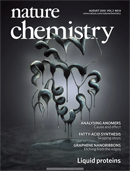
My sailboat's name is the
Fiat Lux — "let there be light" in Latin — drawing from both my theological and scientific personae. I sail a Laser, an Olympic class racing dingy, which is an apt boat for a quantum mechanic. The ability to amplify light by stimulating an existing emission process was first predicted by quantum mechanics, then the apparatus to actually do it was built. Laser is really an acronym:
Light
Amplification by
Stimulated
Emission of
Radiation. The radiation is electromagnetic radiation, not the radioactive radiation.
There's been a smattering of conversation about light production around my house this weekend between sailing the Laser, setting off fireworks and observing fireflies. One of my teen guests wondered how the fire in fire flies was different from the fire in fireworks. All light is not created in quite the same way....though there are some fundamental similarities.
There are really two fires in fireworks, the thermal explosives that send them skyward, and the "rockets red glare" — the glittering burst of color in the sky. The heat from the thermal explosion (usually blackpowder or a similar substance) is what trigger the colors.
If you ever done a flame test, putting a solid substance or a concentrated solution on a wire loop and placing it in a flame to see what color is produced, you've done the same chemistry. The extreme heat excites electrons in an atom or molecule, and as they fall back down to their lowest energy, or ground state, emitting a photon (a bit of light) that just exactly matches the difference in energy between the excited state and the ground state. An orange flame meant you had sodium on the wire, while a violet flame suggested potassium. More properly this technique is called atomic emission spectroscopy.
For atoms the picture you usually see in a high school text of this process is of a ladder, where electrons are shown moving from rung to rung. The larger the distance between the two rungs (or states) the higher the energy of the photon emitted. If the distance corresponds to photons in the visible region, you see a color, otherwise you have to use something fancier to figure out the energy of the photons being released.
Different atoms have different spacings between states and so the colors they emit when heated to high temperatures are likewise different. There are in fact many states, and so many types of photons can be emitted, but few are in the visible region.
If you click
here, you can see a simulation of the photons you'd expect to see when an excited sodium atom returns to the ground state. Are you surprised that sodium can be used for yellow-orange in fireworks? Some
urban legends suggest that lead (or radioactive barium) are used in fireworks, but if you look at the
line spectrum of lead you can see why it can't be true -- there is no rung to rung jump in lead that corresponds to a visible photon. So a lead firework would be invisible! (Lead used to be used to make the fireworks "crackle"...)
(And it's true that barium salts are used in fireworks, but they are not radioactive. There are no naturally occurring radioactive isotopes of barium.)
Read more:An article at C&E News on the chemistry of fireworksRelated posts:Jello lasersRomancing the stone (lasers in the plot line of a romance novel)
Image from
Wikimedia.




























